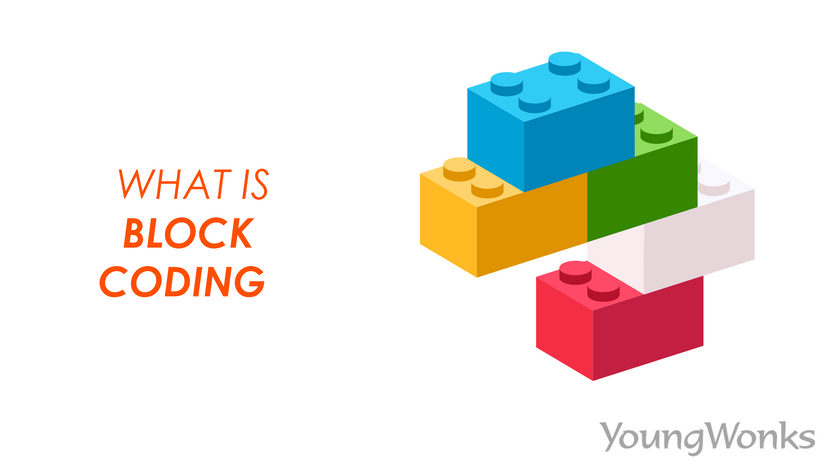Jan 15, 2023 By Team YoungWonks *
Introduction
Technology is dictating today’s world. As a result learning how to code is a prime requirement and is one of the most competitive fields. Computer programming is introduced to kids using various programming languages. Before putting down the code, understanding the coding concepts is the primary requirement for any programmer. Parents often want their kids to understand and learn programming concepts from a very young age as there is no short-cut to mastering coding. To attain the expertise in coding practice is the ultimate key. However developing computational thinking and building analytical approach is also important. Often people have a question: How to begin coding their kid’s coding journey at a very young age? Block Coding is the answer to this question. There are two types of coding i.e. block coding and text-based coding. Let us now understand how to learn coding using block coding.
What is block coding?
Block coding languages are a beginner level programming languages that uses block-based coding. These allow children to understand fundamental computer science concepts with the help of vibrant text-based blocks.
The thing that sets block-based programming languages apart from other coding languages are that drag and drop blocks are used for the majority of the code. This creates a visual programming environment which is the best primary step to learn coding. The code that is in text-based programming is present in the form of visual blocks which is used to create programs or algorithms.
The block-coding approach follows a simple format where the user does not have to worry about syntax errors. This approach is also suited for adults who have no prior programming experience. An aspiring programmer can still create coding games, animations and apps.
For example, Scratch (https://scratch.mit.edu/) is one of the most interesting and widely used visual block coding software which is developed by MIT. Its interface is visually attractive for kids and blocks can be easily navigated. The output of the blocks are shown through animated sprites. Checkout the image below to see its interface.
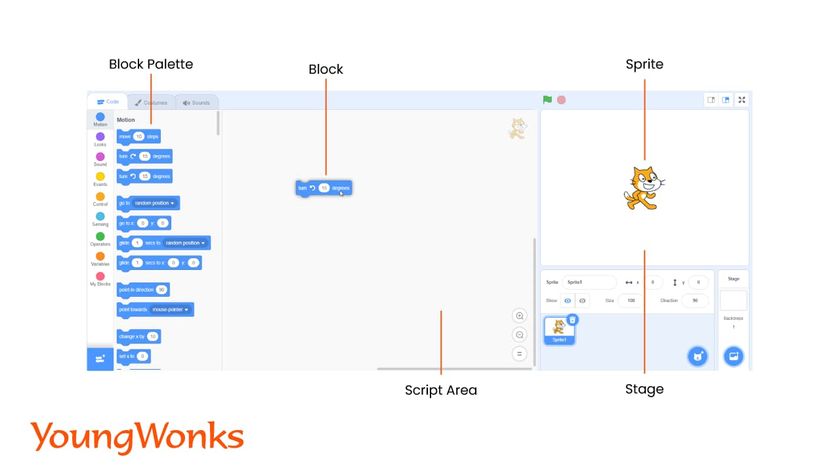
Examples of Block code
Some of the blocks in scratch are given below:
1. Motion Blocks
Motion blocks are used to make the blocks move, turn, rotate, etc. Take a look at an example below from scratch where the move block from motion is used to make the cat move.
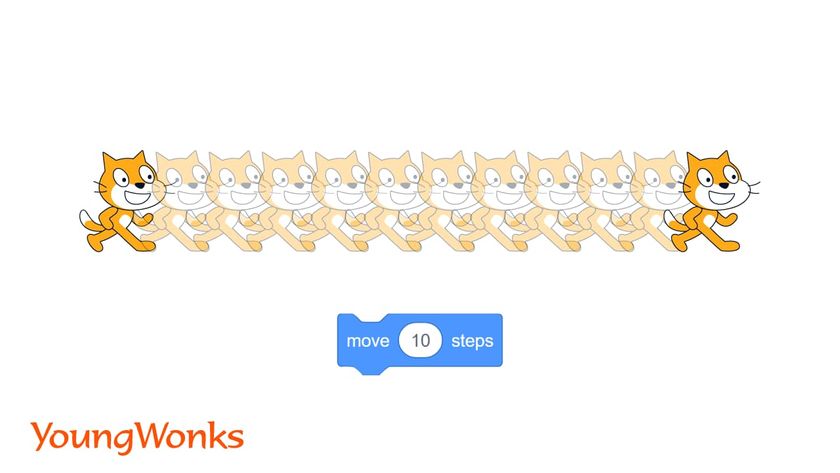
2. Event Blocks
These blocks are used to start, pause or end particular set of code. Take a look at an example below from scratch where the flag block is used to make the cat say hello.
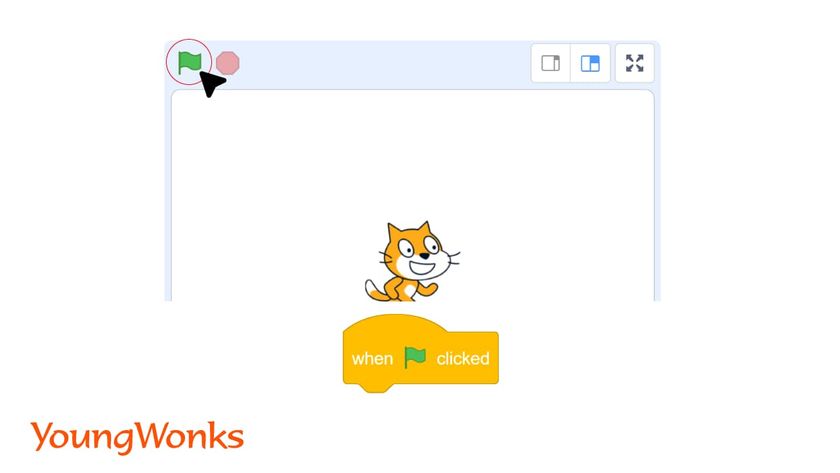
3. Sound Blocks
Sound blocks are used to add sound effects of instruments, characters or even add sound effects from the internet.
4. Loop Blocks
These blocks are used to control the sprites. In the example given below the repeat block is used to make the cat turn multiple times.

Now let us take a look at the two examples of block coding in scratch
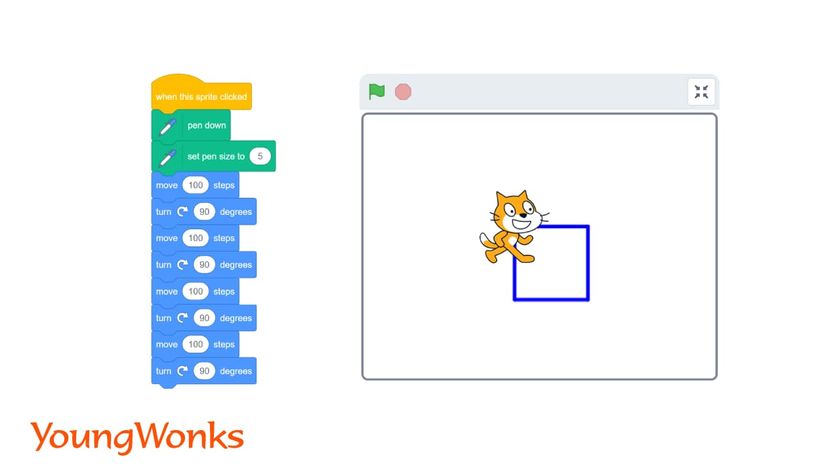
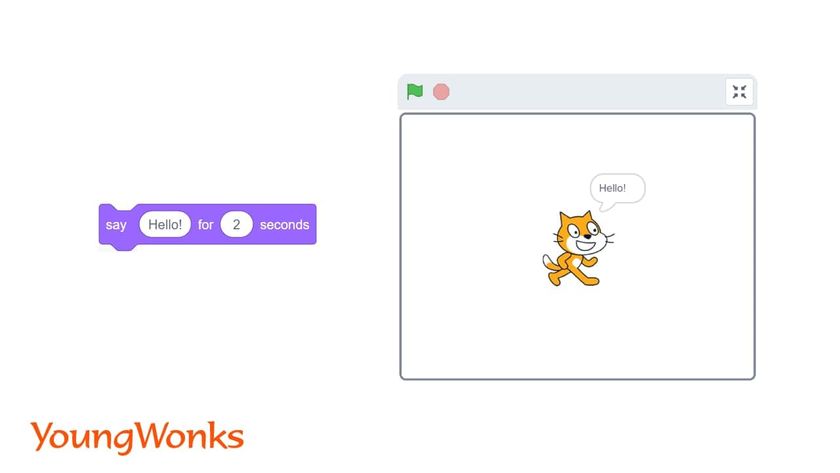
Block Coding Websites
Some of the block coding websites are given below:
1. Scratch
2. Scratch Jr.
3. Tynker
4. Code.org
5. VEXcode VR
6. Blockly
7. Game Salad
Some of the websites mentioned above are free programming websites which can be used by kids.
Advantages
1. Visual Coding
Unlike the text-based programming languages this type of coding uses blocks which can be dragged and dropped. It removes the need of typing lines of code. This also allows the kids to get habituated to use mouse or trackpad. The different colors assigned to the blocks help the kids to visually track the blocks easily.
2. Syntax-free coding
Here coding works by removing syntax errors. Thus such programs without syntactical errors provides the coder with smooth coding experience. This focuses on strengthening the computer science fundamentals.
3. Convenient to use
This type of coding is easy to use and operate. Kids are able to adapt to block coding easily. Blocks of code can be created easily as it has an interactive interface.
Disadvantages
1. Suitable for younger kids
The interface is often attractive to younger kids as the colors and sprites attract their attention. Drag and drop method would be too simpler for older kids and they would like to learn text-based coding.
2. Limited capabilities
There is not much which can be done in block coding apart from learning the fundamentals, create games and animations. Kids have to move beyond block coding to text-based programming to turn professional coders.
3. Not a replacement of text-based coding
Block coding is not a replacement for programming languages such as Python, Java, Javascript, C++. To turn into professional coders and stay updated with technology kids have to move to text-based coding.
Discover More About Coding for Kids
For parents and young learners eager to explore the world of block coding further, Coding Classes for Kids at YoungWonks offer a comprehensive foundation in this intuitive and engaging programming method. Our curriculum also extends to Python Coding Classes for Kids, which introduces students to text-based programming, cultivating skills that are valuable in today's digital world. Additionally, for those interested in hardware and game development, our Raspberry Pi, Arduino, and Game Development Coding Classes provide a practical, hands-on approach to learning, ensuring that students can apply their coding skills in creative and innovative ways.
*Contributors: Written by Aayushi Jayaswal; Lead image by Shivendra Singh
